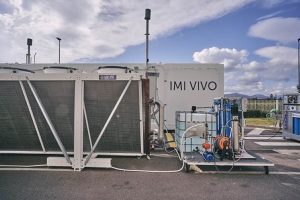In the first study of its type, Stanford engineering professor Mark Z. Jacobson used cutting-edge computer modeling to bust the myth that fossil fuels – rather than a combination of renewables, battery storage, and hydrogen fuel cell storage – are needed to keep the lights on 24/7, 365 days a year at low cost throughout the world. As the world undergoes a new industrial revolution away from fossil fuels to renewables in order to address air pollution, energy security and the climate crisis, the Stanford study provides a key missing piece of the puzzle.
The study finds that transitioning to clean power can reduce countries’ overall annual energy costs by around 61%.
“At this point, anyone saying that we need fossil fuels, nuclear, or any other conventional energy resource to keep the lights on 24/7 hasn’t done the analysis,” Jacobson said.
“This study will help planners create a more efficient and cost-effective future energy system based on clean, renewable electricity. The results provide countries with concrete evidence and the confidence that 100% clean, renewable grids not only lower costs but are also just as reliable as the current grid system.”
Wind turbines and solar power are rapidly replacing fossil fuels worldwide as a source of electricity. However, the wind does not always blow and the sun does not always shine, leading to fears of power outages. Currently, hydroelectric power and fossil gas provide most backup when insufficient coal, nuclear, or other electricity is available. What happens, though, when a country transitions to 100% renewable electricity, thereby eliminating fossil gas backup? Two of the main contenders for replacing fossil gas for storage are batteries and green hydrogen used in fuel cells.
Electricity storage is used for two main purposes: providing short bursts of large amounts of power and providing lesser amounts of power for a long time. Although batteries can be linked together to provide both short-term power and long-term energy storage, they are more cost-effective for short-term (seconds to hours) power bursts than for long-term (hours to days or weeks) storage. Green hydrogen storage, on the other hand, is more cost effective for long-term energy storage than for short-term power bursts. Hydropower can be used for both short power bursts and long-term energy storage.
Jacobson analyzed the cost of keeping the grid stable in 145 countries powered for all energy purposes (electricity, transportation, buildings, industry, agriculture, forestry, fishing, and the military) by clean, renewable energy, namely electricity and heat coming from wind, hydroelectric, geothermal, and solar sources. The main electricity storage options included existing hydropower dams, batteries and green hydrogen.
The study found that existing hydropower plus batteries avoids blackouts throughout the world. However, adding green hydrogen to the mix reduces energy overall cost in some regions. Using hydropower and green hydrogen but no batteries is always more expensive than using hydropower with both batteries and green hydrogen.
The main reason for this result is that every region in the world needs short-term bursts of power with 100% renewables on the grid (thus every region needs either hydropower or batteries), but not every region needs new long-term storage. This is because such regions have either a good combination of wind and solar resources that provide energy continuously over long periods, have a lot of existing hydropower for long-term storage, and/or can use the same number of new batteries they use for short power bursts for long-term storage as well.
Jacobson also finds that combining hydrogen production and storage for grid purposes and non-grid purposes (steel production, ammonia production, and long-distance, heavy transport) generally reduces overall energy cost relative to separating such production and storage, due to economies of scale.
The study was carried out through three types of computer modeling: a three-dimensional global weather-climate-air pollution model, a spreadsheet model and a model that matches electricity, heat, cold, and hydrogen demand with supply, storage and demand response assuming perfect grid interconnection.
Five countries already have 100% renewable electricity grids, 10 have 97.3–100% renewable grids, and 35 have 50–100% renewable grids. Such grids are mostly dominated by hydropower, though. In 11 U.S. states, 51–97% of the equivalent electricity consumed is powered by renewables, with seven of those states dominated by wind and one by solar.
The study was published in iScience.






